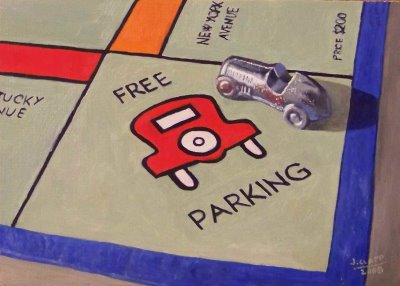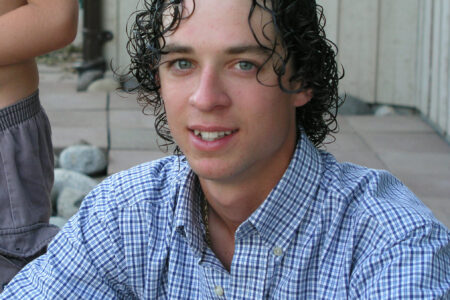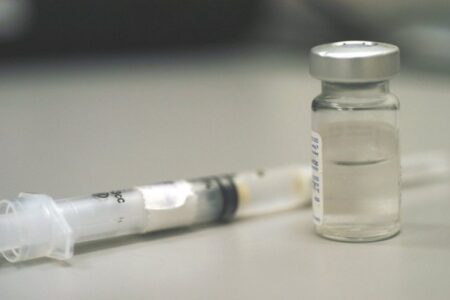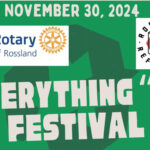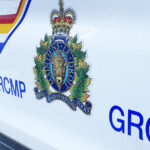ANALYSIS: Do you know what you're paying for? PART THREE—Running the city
This is the final article in a series to address Coun. Cary Fisher’s surprise at a lack of awareness about the budget among Rossland residents.
Part One examined the General Fund in broad strokes. The actual “general” revenue of the city in 2011 was $6.4 million, to which taxation contributed 57 per cent, residential taxes contributed 48 per cent, and single family homes in particular contributed 35 per cent of the total.
In Part Two we looked at the cost to support community organizations, facilities, parks, and recreation. Fisher had suggested the public should consider “new priorities” in these areas as a means to reduce taxes.
In total in 2011, “community” facilities, funds, and services cost the city $1,135,114, or 18 per cent of the total general revenue. In different terms, the average single family residence in 2011 contributed about $281, or roughly $108 per $100,000 of assessed value, to community organizations, parks, and recreation.
Now we lay out the real meat and potatoes for running the city, everything from administration, planning, public works, and transfers to reserves in the General Fund—another 65 per cent of general revenue, or $4.2 million—to a more detailed examination of the other two city funds: the Water Fund and the Sewer Fund.
Please note that the total of General Fund expenses we’ve identified, while drawn directly from the 2012-2016 Financial Plan, have yet to add up to the full $6.4 million. If anyone knows where an extra $1.14 million expense might be hiding that we missed…
Below, unless we say otherwise, quoted figures are the actual revenues and expenses for 2011, the most recent year for which these numbers are available.
The Water Fund
Water Fund revenues come from parcel taxes and local service area taxes ($445,258), sales of services ($600,670), interest, penalties, and miscellaneous income ($19,179), grants ($225,200), transfers from reserves ($289,935), and financing makes up the difference.
Water Fund revenues
2011 Budget – $2,218,600
2011 Actual – $1,580,141
2012 Budget – $1,821,400
Water Fund expenses include administration ($116,156), the treatment plant ($150,512), reservoir and watershed maintenance ($12,440), distribution systems ($90,301), service connections ($66,871), and various other minor expenses, for example for new water systems and meters.
In addition, “fiscal services” including debt payments and transfers ($255,545), special projects ($34,320) and capital projects ($752,708) are accounted in total expenses.
Water Fund expenses
2011 Budget – $2,218,600
2011 Actual – $1,521,782
2012 Budget – $1,823,500
The water operating surplus minus the capital deficit gave a surplus of $58,358 in 2011 transferred to funds for project financing and reserves.
The Sewer Fund
Sewer Fund revenues come from parcel taxes and local service area taxes ($122,085), sales of services ($520,317), interest and penalties ($5715), transfers from reserves ($205,700), and financing makes up the difference.
Sewer Fund revenues
2011 Budget – $1,135.500
2011 Actual – $853,817
2012 Budget – $1,166,100
Sewer Fund expenses include administration ($41,200), collection systems ($95,471), service connections ($15,162), new services ($13,691), the pump station ($23,259), and regional utilities ($228,354), plus some minor expenses.
In addition, “fiscal services” including debt payments and transfers ($74,746), special projects ($3450) and capital projects ($366,175) go into total expenses.
Sewer Fund expenses
2011 Budget – $1,135,546
2011 Actual – $861,945
2012 Budget – $1,166,100
The sewer operating surplus minus the capital deficit gave an overall deficit of $8128 in 2011 that was drawn from project financing and reserves.
The General Fund
As with the sewer and water funds, the General Fund is split into operating revenues and expenses and capital revenues and expenses. We’ll break out the General Fund in more detail after giving it a broad explanation here.
General operating revenues come from property taxes, but also sales of services (such as recreation facilities), licenses, permits, fines, a number of grants, and transfers from reserves.
The general operating fund is spent on just about everything, from governance and administration to public works operations, bylaw enforcement, building inspection, waste collection, cemeteries, planning, recreation and cultural services, parks and facilities, and financing interest on debts.
Additionally, a number of “special projects” are identified in the budget that are planned in each of these areas that receive individual attention in the budget. Similarly, each aspect of community support and assistance—namely funding for community organizations and facilities—is treated separately.
General operating fund (2011)
Revenue – $4,690,998
Expenses – $3,303,662
Special projects expenses beyond special projects financing – $68,627
Community support and assistance – $424,301
Surplus – $894,409
The general capital fund gets revenue from interest on investments, sales of equipment and property, rentals (minus maintenance), debt financing and grants for capital projects, transfers from reserves, and debt service taxation.
The capital is spent on debt servicing, amortization, a range of projects such as roads, drainage, sidewalks, equipment replacement, properties, and so on.
General capital fund (2011)
Revenue – $1,034,270
Expenses – $1,729,193
Deficit – $694,923
The general operating surplus minus the capital deficit gave a surplus of $199,486 in 2011 that was transferred to funds for project financing and reserves.
We cannot yet explain why the sum of the general capital and operating funds’ revenues ($5.7 million) is less than the total general fund revenue ($6.4 million).
Special Projects
Special projects are specifically identified in the financial plan and their expenses calculated across a period of time, with the sources of funding noted. Each project is slotted into the general, water, or sewer fund.
Projects range from upgrading office equipment to wildfire protection plans, road drainage improvements, renovating water intakes, fixing retaining walls, breaking new trails, putting on new roofs, and big ones like the Columbia-Washington rebuild.
A whole list of these projects and their projected timelines and expenses is available in the 2012-2016 Financial Plan.
General Fund expenses
General fund expenses are categorized into legislative and government, transportation, protective services, health and welfare services, planning, debt servicing, and transfers.
As in Part Two, we reframe these 2011 expenses both as the tax cost to an average single family residence per $100,000 of assessed home value, and as a percentage of the total general revenue of $6.4 million.
Legislative and government costs include Information systems ($134,144), insurance premiums ($78,240), 2011 elections ($7952), the external audit ($26,964), wages and benefits for financial staff ($265,877), administrative staff wages and benefits including legislative support ($337,787), office expenses ($76,293) and mayor and council expenses ($51,578).
We’ve added City Hall expenses ($32,471) to the legislative and government expenses as well, although it is accounted in a different category in the budget.
Total legislative and government expenses (16.3% of 2011 general revenue, or $100 per $100,000)
2011 Budget – $1,126,460
2011 Actual – $1,048,751
2012 Budget – $1,087,600
The transportation operations and maintenance budget is significant. It includes pickup trucks ($46,429), heavy trucks ($98,700), heavy equipment ($177,616), auxilliary equipment ($16,120), chain repairs ($34,743), public works administration ($209,597), third party work ($14,648), road surfaces ($67,032), summer sidewalks and steps ($11,161), storm drainage ($51,132), street cleaning ($39,799), dust control ($13,997), boulevard maintenance ($43,348), snow plowing ($214,567), road sanding ($93,714), snow removal ($123,344), winter sidewalks and steps ($15,598), street lighting ($71,970), decorative lighting ($6763), street signs ($11,141), and lane marking ($8200).
We’ve added the “workshop, works yard, and garage maintenance” ($118,987) to this transportation category as well to join other public works expenses in the general fund, although it is accounted in a different category in the budget.
Total transportation expenses (22.9% of 2011 general revenue, $141 per $100,000)
2011 Budget – $1,624,100
2011 Actual – $1,470,771
2012 Budget – $1,654,900
Protective services include building inspection ($117,124), the emergency measures program ($26,892), bylaw enforcement ($23,000), and animal control ($15,388).
The emergency measures program is run with 5 per cent of the “city clerk’s” time, namely Corporate Officer Tracey Butler. Bylaw enforcement is run with 10 per cent of the city clerk’s time and 10 per cent of the public works clerks’ time. Animal control is run with 5 per cent of the city clerk’s time and 10 per cent of the public works clerk’s time.
Total protective services expenses (2.8% of 2011 general revenue, or $17 per $100,000)
2011 Budget – $157,100
2011 Actual – $182,405
2012 Budget – $144,300
“Environmental health services” include garbage collection ($78,185) and spring and fall cleanup of yard wastes ($39,145). “Public health and welfare services” is entirely cemetery maintenance ($8086).
Total “health and welfare services” expenses (1.9% of 2011 general revenue, or $12 per $100,000 )
2011 Budget – $130,900
2011 Actual – $125,415
2012 Budget – $130,900
Town planning includes general planning expenses such as surveys, advertising, and design reviews ($4057), planning administration including the planner, an assistant, workshops and supplies ($159,775), engineering consultants ($32,002), and bylaws and studies ($7484).
Total planning (3.2% of 2011 general revenue, or $20 per $100,000)
2011 Budget – $225,900
2011 Actual – $203,318
2012 Budget – $260,200
Finally, the last expenses are “fiscal services” that include debt servicing ($155,678), and transfers of funds to reserves ($974,395), in addition to passing on taxes collected for other government agencies.
Total debt servicing (2.4% of 2011 general revenue, or $15 per $100,000)
2011 Budget – $159,400
2011 Actual – $155,678
2012 Budget – $142,600
Total transfers to reserves (15.1% of 2011 general revenue, or $93 per $100,000)
2011 Budget – $760,400
2011 Actual – $974,395
2012 Budget – $504,100
It should be noted that debt servicing is slated to increase dramatically in 2013 due to $511,000 in “capital plan debt payments.”
A final note
We are confident that revisions to this analysis will be required as new information about the budget structure comes to light to explain the inconsistencies we’ve suffered from—and that we hope we’ve clearly flagged already.
One possible problem is that the percentages of general revenue and dollar costs per $100,000 for single family property tax may need to be shifted, most likely higher, but their relative values will remain the same.
For example, while our analysis suggests that bylaw enforcement and animal control in 2011 cost a single family residence some $3.68 per $100,000 assessed value, it’s possibly as much as 20 per cent higher, or $4.42. But if this were the case, then across the board, all the values would be 20 per cent low.
Clear as mud?
Probably, but hopefully this is a step in the right direction for residents who want to know more about what they’re paying for.


